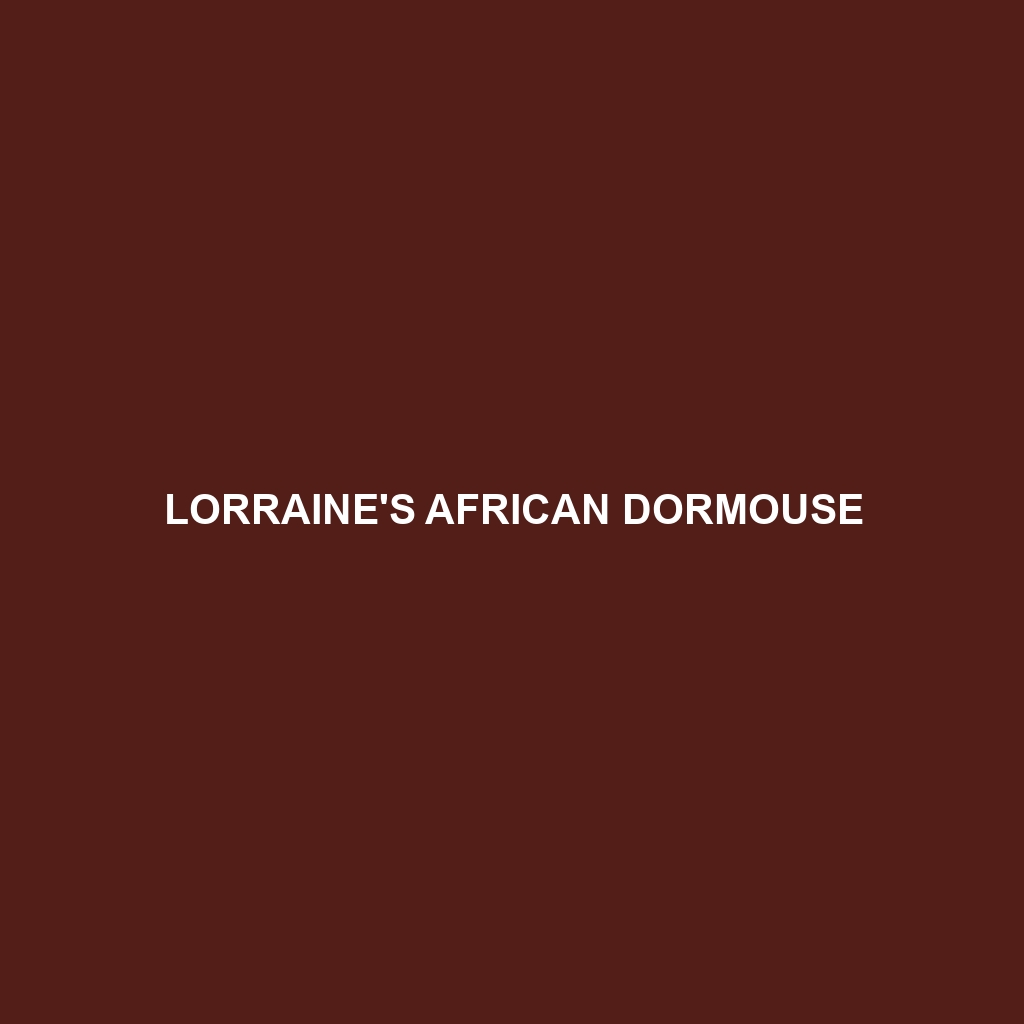Lorraine’s African Dormouse
Common Name: Lorraine’s African Dormouse
Scientific Name: Graphiurus lorraineus
Habitat
Lorraine’s African Dormouse is primarily found in the dense forests and grasslands of central and southern Africa. Its range includes regions such as the Democratic Republic of the Congo, Uganda, and parts of Tanzania. These small mammals thrive in habitats where they can find ample vegetation and cover, which provides them with both food and safety from predators.
Physical Characteristics
This species typically measures between 10 to 12 cm in length, excluding the tail, which can add another 8 to 10 cm. Lorraine’s African Dormouse has a distinctive appearance, showcasing a soft, sandy-brown fur on its back and a white underbelly. Its large, rounded ears and big, black eyes contribute to its charming look, while its bushy tail enhances its agility in the treetops.
Behavior
Lorraine’s African Dormouse is nocturnal, meaning it is most active during the night. These dormice are known for their climbing abilities, often found foraging in trees and shrubs for food. They are social creatures and can often be seen in small groups, exhibiting playful behaviors. Their ability to glide short distances helps them evade predators and navigate their arboreal environment.
Diet
The diet of Lorraine’s African Dormouse primarily consists of fruits, seeds, and insects. They are known to be opportunistic feeders, often consuming whatever is available and in season. In addition to fruits and seeds, these dormice may also enjoy the occasional flower or nectar, helping to pollinate plants in their habitat.
Reproduction
Lorraine’s African Dormouse typically breeds once or twice a year, with mating occurring in the spring and summer months. The gestation period lasts about 30 days, after which a female gives birth to a litter of three to five offspring. The young are born hairless and rely on their mother’s milk for nourishment. The mother exhibits strong parental care, ensuring the safety and development of her young in their early weeks.
Conservation Status
Currently, Lorraine’s African Dormouse is classified as vulnerable by the International Union for Conservation of Nature (IUCN). The species faces threats from habitat loss due to deforestation and agricultural expansion. Conservation efforts are essential to protect their natural habitat and ensure the survival of this unique species.
Interesting Facts
One fascinating aspect of Lorraine’s African Dormouse is its ability to enter a state of torpor, allowing it to conserve energy during periods of food scarcity or extreme weather conditions. This adaptation aids in their survival in fluctuating environments.
Role in Ecosystem
Lorraine’s African Dormouse plays a crucial role in its ecosystem as both a consumer and a prey species. By feeding on fruits and seeds, they assist in seed dispersal, promoting plant diversity and regeneration. Additionally, they serve as a food source for various predators, contributing to the balance of their habitat’s food web.
